Authors
Ralph A. Cossa
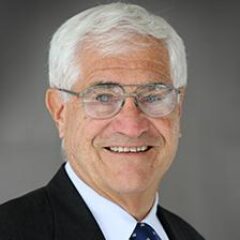
Ralph A. Cossa is former president and Worldwide Support for Development-Handa Chair at the Pacific Forum. He is a lifelong contributor to Comparative Connections and coauthors the regional overview chapter. Cossa is a member of the ASEAN Regional Forum (ARF) Experts and Eminent Persons Group. He is a founding member of the multinational track two Council for Security Cooperation in the Asia Pacific (CSCAP). He co-chairs the CSCAP study group aimed at halting the proliferation of weapons of mass destruction in the Asia Pacific region and is the executive director of the US CSCAP Member Committee (USCSCAP). He serves on the Board of the Council on US-Korean Security Studies and the National Committee on US-China Relations (NY). He is a frequent contributor to regional newspapers, including the Japan Times, Korea Times, and International Herald Tribune. His publications include The United States and the Asia-Pacific Region: Security Strategy for the Obama Administration (Washington DC: Center for a New American Security, 2009); “US-Japan Relations: What Should Washington Do?” in America’s Role in Asia: Recommendations for US Policy from Both Sides of the Pacific (San Francisco: Asia Foundation, 2008); and An East Asian Community and the United States, Ralph A. Cossa and Akihiko Tanaka, eds., (Washington, D.C.: CSIS Press, 2007).
Articles by Ralph A. Cossa

Regional Overview
May — November 2024Regional Overview: The Year of Elections (Finally) Ends
The “year of elections” culminated in the allegedly (but not actually) “too close to call” US presidential elections on Nov. 5, which resulted in Donald Trump’s scheduled return to the oval office on Jan. 20, 2025. Trump has wasted no time identifying his preferences for key leadership positions in his incoming administration, some surprising, some shocking, and a few somewhat disturbing (to us, at least), although most of his national security/foreign policy choices appear more mainstream. While we would not be bold (or foolish) enough to make firm predictions regarding future policy, we will speculate on expected trends and characteristics, while acknowledging at the onset that Trump prides himself on being unpredictable (and has largely succeeded in this quest).
While elections elsewhere have gone largely as expected, two unexpected domestic political developments promise to impact US policy and regional stability; namely, the failed attempt by Republic of Korea President Yoon Suk Yeol to declare martial law which resulted in his impeachment, and the political turmoil in Japan that has left the Liberal Democratic Party for the first time in decades finding itself at the helm of a minority government. Elsewhere (and largely overlooked), the usual spate of multilateral meetings took place in the second half of the year—the Asia Pacific Economic Cooperation (APEC) Leaders’ Meeting, the G20 gathering, the East Asia Summit and companion ministerial-level ASEAN Regional Forum (ARF), the BRICS Summit, etc. —amid enhanced military activity and enhanced trilateral/minilateral cooperation.
Temp Placement of Figure 1 G20 Leaders Meeting
Trump Triumphs
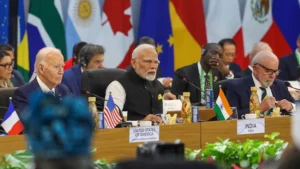
Figure 1 PM Modi made the remarks at the G20 session on “Social Inclusion and the Fight Against Hunger and Poverty.” (Photo: X/@narendramodi)
There should be no repeat of the Jan. 6, 2020 mayhem as Vice President Kamala Harris graciously accepted defeat and congratulated president-elect Donald Trump on his Nov. 6 victory. Trump was quick in identifying his planned nominees for key national security posts, including Sen. Marco Rubio of Florida to be secretary of state and Florida Republican Rep. Michael Waltz as National Security Advisor. Rubio is expected to sail through the Senate confirmation process and National Security Council members are not subject to ratification. This holds true as well for Trump’s choice of former State Department official Alex Wong to serve as deputy national security adviser. Wong served as deputy special representative for North Korea during the first Trump administration and was closely involved in arranging Trump’s summits with North Korean leader Kim Jong Un.
One thing Rubio and Waltz and other national security-related potential nominees, like U.S. ambassador to the United Nations nominee Congresswoman Elise Stefanik (R-NY) and CIA Director-designate (and former Director of National Intelligence) John Ratcliffe have in common is strong anti-China and anti-authoritarian views. Prospective Secretary of Defense (and former Fox News host) Pete Hegseth would join this chorus if his nomination is approved (which seemed somewhat likely but is by no means assured at this writing).
The real wild card on the national security team is former Hawaii Democratic Rep. Tulsi Gabbard who Trump has chosen to serve as his director of national intelligence, a job for which (in our not-so-humble opinions) she is uniquely unqualified. At this writing she appears to be the candidate most likely to be rejected by the Senate.
On the economic front, Trump has identified hedge fund CEO Scott Bessent to be Treasury secretary and billionaire Harold Lutnick as Commerce secretary. Both are strong proponents of tariffs; Lutnick, among other duties, oversees the Office of the U.S. Trade Representative.
Still to come will be the under-secretaries and assistant secretaries for the various Asia-related posts who will be presenting their bosses with policy alternatives and assessments. They in turn will be guided by the new administration’s key strategy documents such as the White House-produced National Security Strategy and the Pentagon’s National Defense Strategy.
What we think we know . . .
. . . based on what he’s done before.
Unlike most who have come before or since, Trump is more transactional, more unpredictable (which he sees as a virtue and many others see as a vice), more confrontational (with friends and potential foes alike), and more mercurial. When it comes to the promotion of democracy and values-based policies, however, he is much less ideological (some would say less sanctimonious) than many of his predecessors. His foreign policy approach is more trade-based (or more accurately deficit-based), than security-oriented. He is more unilateralist than multilateralist and places less value in alliances and like-minded security relationships than both Democratic and Republican predecessors.
His focus is primarily domestic, not international, and while his policies can have significant impact on others, “America First” means how does it impact the US’ (or his own personal) bottom line, with little concern for the consequences to others. He also seemingly rejects any belief in US exceptionalism and all the burdens and responsibilities that it creates.
Most importantly, we have learned that you can’t take what he says at face value. Normally, if the president says something, it is usually seen as a policy pronouncement. But with Trump, it may just be a bargaining point, or a wild random thought, or even a deliberate lie (or “alternative truth”). Then-President Trump once referred to Chinese President Xi Jinping as a “brilliant leader” and “great man” only a few days after calling him an “enemy” who is ripping off America. When pressed about this inconsistency, he responded: “Sorry. It’s the way I negotiate,” further noting that “it’s done very well for me over the years, and it’s doing even better for the country.” Separating when he is speaking as “commander-in-chief” from when he is acting as “negotiator-in-chief” has been, and will remain, no easy task.
Someone once said “Wagner’s music is not as bad as it sounds.” The same can be said for Trump’s foreign policy in his first administration, if you focus on what he actually did and on stated policies in documents like the National Security Strategy, not tweets. Countering this somewhat comforting thought, however, is the fact that many of the internationalists surrounding and advising Trump during his first administration, like former Defense Secretary Jim Mattis, former-Secretary of State Mike Pompeo, and his former UN Ambassador (and main primary opponent) Nikki Haley are not likely to be involved in the upcoming administration.
. . . based on what he’s saying and doing now.
While the world has changed in many ways since he was last president, there appears to be very little change in the way Trump sees the world.
While his relentless focus on the bottom line for the US and the disregard for other nations’ interests is often derided, the same can be said about virtually every national leader; they are elected (or self-appointed) to look out for their own country’s national interests, first and foremost. Americans like to believe we have been held, and/or have held themselves, to a higher standard. Trump, in this regard, is more like every other world leader, and less like the ideal picture we have painted for ourselves.
Trump is also doubling down on his America First mantra, based on the eclectic assortment of potential cabinet and other senior officials being proposed thus far (and remember, with the exception of his national security advisory staff, most face confirmation hearings, a task made easier, but by no means certain even with Republican control of the Senate). On the other hand, unlike many of his domestic-oriented choices, most of his national security choices, as noted above, are mostly internationalists who are more pro-alliance and pro-engagement, and more anti-authoritarian than Trump often appears to be.
Meanwhile, the hardening of anti-China sentiment, which grew during the first Trump administration and then was at least perpetuated if not intensified during the Biden administration, appears likely to continue to intensify, for economic and ideological reasons as well as security concerns. To be fair, a lot of this is driven not by US preferences or predetermination but by Chinese predatory practices and increased aggressiveness, which also seem destined to continue if not increase.
Even before the failed declaration of martial law (more on this below), South Koreans were nervously awaiting the onset of Trump 2.0. The sense of urgency that drove the Biden/Kishida/Yoon administrations (now all gone or going) to further institutionalize the Camp David agreements was to prevent backsliding if Trump were reelected. Koreans were also nervous about a possible renewed “bromance” between Trump and Kim Jong Un; Alex Wong’s selection as deputy national security advisor has added to this anxiety. Trump’s intentions and desires (or lack thereof) aside, one wonders if Kim would agree to another summit even if one were proposed. He’s already gotten what he desired most (international recognition) and is unlikely to agree on the next diplomatic step, which would be a visit to Trump’s home turf. It’s also hard to imagine Xi or Putin pressuring Kim to make nice with Trump, at least not while Ukraine is still boiling over and China-US relations remain strained.
Despite headlines to the contrary, what Trump plans to do about Ukraine is also unclear. His fascination with Putin aside, his pledge to end the Ukraine War on day one requires Putin’s acquiescence. Note that Trump spokesmen have claimed the two have spoken and Trump has told Putin not to make things worse, advice Putin has clearly ignored. While Trump is likely to cut back if not curtail US financial support to Ukraine, he is equally likely to remove remaining restrictions on Ukraine’s use of US-provided weapons if Putin drags his feet, thus making the great negotiator look bad. Only time will tell.
. . . but really don’t know!
While all that we have just said may very well continue to hold true, we must caveat it all by saying that, when it comes to Trump’s future policies, we are all guessing. Everything we just said could be wrong. Or, even if it is initially correct, it could change. Biden, like many of his predecessors, has had, among other senior Cabinet officials, the same national security advisor, secretary of State, and secretary of defense he began with four years ago. Trump, in his first term, had four national security advisors, two confirmed and four acting secretaries of state, two secretaries of defense, and four chiefs of staff. With each leadership change came subtle and, on occasion, not so subtle policy changes; again, stay tuned.
More importantly, recall the words of former UK Prime Minister Harold MacMillan, when asked what had been the greatest influence on his administration: “Events, my dear boy, events,” he replied. Trump’s first administration didn’t see COVID coming, and the Ukraine invasion and events of Oct. 7 and its aftermath in Gaza had a profound impact on the Biden administration. Who knows what great challenge lies just around the next corner?
Domestic Politics Spill Over
Speaking of surprises, while considerable column inches have been devoted to the impact of Donald Trump’s return to the White House, domestic political developments in other countries have potentially significant consequences as well. Two—the collapse of the Kishida government in Tokyo and the botched auto-golpe by South Korean President Yoon Suk Yeol—warrant mention here.
LDP turmoil. Kishida’s government collapsed under the weight of accumulated scandal and policy incoherence. The political funds scandal that decapitated the ruling Liberal Democratic Party (LDP) was only the latest in a series of revelations about misbehavior that undermined public trust in the party. Kishida’s dithering response to the crisis exposed him as weak. His government’s inability to prioritize among competing objectives—increased defense spending, strengthening the social safety net, and more support for child care—further eroded public confidence.
The political funds scandal also deprived the LDP of its ability to organize party elections. The factions that were disbanded in the aftermath of the scandal served as the vehicle to distribute positions within the government and the party; without them, politicians were left to vote as they pleased in party elections rather than in accordance with the backroom decisions of senior officials who served as faction heads. This vacuum allowed Ishiba Shigeru, the five-term contender for party president, to prevail in the October party vote and then be elected as prime minister.
While qualified to serve as PM and holder of views that align him with the party (and national) mainstream, he is reviled by the rightwing of the LDP for being “the anti-Abe,” adopting political positions and a style that were the antithesis of Japan’s longest-serving prime minister. Days after Ishiba’s victory in the LDP vote, Taniguchi Tomohiko, Abe’s speechwriter who carries the flame for his former boss and speaks for the group within the LDP, published a commentary that essentially declared war on the new prime minister.
A little over a month into his tenure, Ishiba clings to power but the media focus on his weakness reflects both the reality of his government and some nudging from the right. The truth is Ishiba is weak, leading a minority government in which small opposition parties are trying to maximize their influence and the prime minister has little alternative but to try to accommodate them.
This matters for our purposes because Japan has played a key role in regional politics in recent years, following Abe’s lead and with support from the US to step up. It is not clear that he has the diplomatic chops or the political power to maintain that leading position in the region, a shortcoming that will become palpable if Trump runs roughshod through the Indo-Pacific and the US-supported alliance structure as he did in his first term. Moreover, it isn’t clear that Ishiba has the power to deliver on the promise of increased defense spending that Kishida made and which is likely to be a key factor in, if not determinate of, relations with the US.
Yoon’s self-inflicted disaster. The second important domestic political development is the botched coup launched by President Yoon in early December. Yoon was a weakened political figure before he committed that act of self-immolation, and now his fate is now in the hands of the Constitutional Court, which has up to 180 days to determine if the impeachment stands. If so (which seems likely), a new presidential election must be held within 60 days of the court’s ruling. Until then (and even if the impeachment is overturned), he is a husk of a leader.
Again, for our purposes the issue is the durability of his foreign policy after he leaves office, in particular the rapprochement with Japan that he engineered. Yoon displayed real vision and no small amount of courage to push that project, and while it is popular among the South Korean public, relations with Japan have proven susceptible to political manipulation and Yoon’s outreach to Japan has been severely criticized by the opposition. A politician determined to use history issues as a tool for advancement invariably finds fertile soil for such a strategy. A weakened partner in Tokyo and a disinterested White House could prove fatal to the rejuvenated bilateral and trilateral relationships.
More Multilateralism, Mostly under the Radar
There were, as always in the last half of the year, several multilateral meetings of note. First in the list was the 16th BRICS summit, held Oct. 22-24 in Kazan, Russia. The summit was a pageant for several reasons. It was the first BRICS meeting to include Egypt, Ethiopia, Iran, and the United Arab Emirates as members—nine in all—who were joined by another 29 guests/observers. Even more important was President Vladimir Putin’s role as host of the summit. That turnout and the continuing interest in the BRICS are proof that attempts to make Putin an international pariah have failed and he remains a powerful figure in world politics—and not only for his ability to wreak havoc and destruction.
The BRICS summit produced the Kazan Declaration. It called for “comprehensive reform of the UN, including its Security Council, with a view to making it more democratic, representative, effective and efficient,” condemned terrorism, expressed concern “about the rise of violence and continuing armed conflicts in different parts of the world,” and called for the peaceful resolution of conflicts. While endorsing an immediate ceasefire in the Gaza Strip, it was far less decisive when it came to the Ukraine war, merely recalling national positions on the Ukrainian crisis, and it “noted with appreciation relevant proposals” aimed at a peaceful settlement of the conflict through diplomacy. The statement also called for reform of the institutions of the global economic order, to reduce US influence (and that of the West more generally) and increase the role of developing countries.
Second was the APEC Economic Leaders Meeting on Nov. 15-16 in Lima, Peru. APEC represents 3 billion people – nearly 40%of the world’s population—and almost half of global trade and more than 60% of global GDP. That gathering produced the Machu Picchu Declaration, which detailed the usual objectives. As always, the leaders called for enhanced economic cooperation to promote sustainable and inclusive economic growth, and address regional challenges. In addition, the leaders endorsed the Lima Roadmap to Promote the Transition to the Formal and Global Economies (2025-2040) and the Ichma Statement on A New Look at the Free Trade Area of the Asia-Pacific Agenda. The leaders’ Declaration had a companion Chair’s Statement, which addressed, as in most other similar meetings, the discussion on Russia’s aggression in Ukraine and other geopolitical issues. Issuance of a separate statement reflects the inability of the group to reach consensus on those issues.
For the most part, the APEC meeting got little attention save for the seeming decline in US influence in Latin America. Considerable media space was devoted to the opening of a $3.5 billion megaport in Peru funded with Chinese money and President Xi’s attendance at that ceremony, a sign of growing Chinese influence in the region. Biden was described as “seemingly dazed” at the usual photo op, and thought to have been “dissed” when placed in the far back corner, between Thailand and Vietnam—even though the positioning is alphabetical.
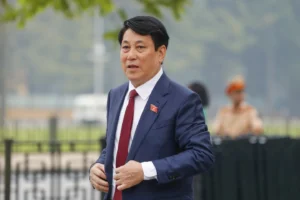
Figure 2 Newly elected president Luong Cuong arrives at the National Assembly in Hanoi, Vietnam on Monday, Oct. 21, 2024. Photo: Minh Hoang/Associated Press.
The following week, many of those same leaders convened in Rio de Janeiro, Brazil for the annual G20 summit. The summit declaration hammered home the meetings three priorities: social inclusion and the fight against hunger and poverty, reform of the institutions of international governance, and sustainable development and the energy transition. The statement again failed to condemn the war in Ukraine—repeating the omission of last year’s declaration – because of Russian resistance. The leaders supported international trade and WTO reform, but the sections were lukewarm at best, calling for respect for rules without a forceful condemnation of protectionism. The climate sections were similarly tepid, again a product of a membership that includes major fossil-fuel producing countries. While more representative than other institutions of global order, we are inclined to agree with the observer who cautioned against expecting much of the G20, which because of its membership, is likely to “follow other international institutions in which little, if any, meaningful progress is made for the foreseeable future.”
Speaking of “little, if any, meaningful progress,” the 19th annual East Asia Summit convened in Vientiane, Laos on Dec. 6-11, absent a number of key leaders: the United States was represented by Secretary of State Tony Blinken, Russia by Foreign Minister Sergey Lavrov, and China by Premier Li Qiang. The Chairman’s Statement contained the usual bromides, reaffirming the importance of maintaining and promoting peace, security, stability, safety, and freedom of navigation in and overflight above the South China Sea,” expressing “deep concern over the escalation of conflicts and humanitarian situation” in Myanmar while reaffirming support for the ASEAN Leaders’ Five-Point Consensus (5PC), and expressing “grave concern over the dire humanitarian situation in Gaza, which has been exacerbated following the 7 October attacks.” Regarding Ukraine, “as for all nations, [the leaders] continued to reaffirm our respect for sovereignty, political independence, and territorial integrity” and “reiterated our call for compliance with the UN Charter and international law.” The leaders’ words largely echoed the comments earlier in the year in the ASEAN Regional Forum Chairman’s Statement, also attended by Secretary of State Blinken.
Ever More Military Cooperation, and Rising Dangers

Multinational ships sail in formation July 22, off the coast of Hawaii during Exercise Rim of the Pacific (RIMPAC) 2024. Twenty-nine nations, 40 surface ships, three submarines, 14 national land forces, more than 150 aircraft and 25,000 personnel are participating in RIMPAC in and around the Hawaiian Islands, June 27 to Aug. 1. The world’s largest international maritime exercise, RIMPAC provides a unique training opportunity while fostering and sustaining cooperative relationships among participants critical to ensuring the safety of sea lanes and security on the world’s oceans. RIMPAC 2024 is the 29th exercise in the series that began in 1971. (U.S. Navy photo by Mass Communication Specialist 2nd Class Larissa T. Dougherty)
One of the great dangers that stalks the Indo-Pacific region these days is the threat of a crisis emerging from mistake or miscalculation. The immediate danger stems from the gray-zone tactics pursued by governments that seek to gain advantage and shift the status quo in their favor by subtle means that remain below the threshold of conflict.
Almost as worrisome—if not more so—is the proliferation of military exercises throughout the region. Many of these drills are intended to signal commitment and readiness to defend alliance obligations, along with the expanding capabilities of the US and its allies as they work together in new ways. In June, US, Japan and ROK held the first trilateral Freedom Edge exercise, a multidomain exercise that was announced at the summit of the three leaders last year at Camp David as part of their efforts to deter evolving nuclear and missile threats from North Korea.
In September, the Royal Australian Navy, Air Force, Japan’s MSDF, Royal New Zealand Navy, the Armed Forces of the Philippines, and the US Navy conducted a Maritime Cooperative Activity (MCA) within the Philippines’ Exclusive Economic Zone in the South China Sea. The MCA included training on routine multilateral surface operations, deck landings, hoisting, and search and rescue.
At the 14th Trilateral Defense Ministers’ Meeting (TDMM) that was held Nov. 17 in Darwin, the ministers—Australian Minister for Defense Richard Marles, Japanese Minister of Defense Nakatani Gen, and US Secretary of Defense Lloyd Austin III—agreed to deepen defense cooperation by including Japanese forces in the annual US-Australia Talisman Sabre and Southern Jackaroo from next year. They also agreed to include or enhance Australia’s participation in annual US-Japan exercises That participation will boost “trilateral interoperability” among the three countries’ militaries. (Their statement also included the usual talking points on “commitment to a peaceful, stable, and prosperous Indo-Pacific region,” respect for rule of law, support for ASEAN centrality, concern about destabilizing actions by China and North Korea, the importance of peace and stability across the Taiwan Strait, and the like.)
The meeting announced establishment of the “Trilateral Defense Consultations” to support alignment of policy and operational objectives of the JSDF, the Australian Defense Force, and US forces from peacetime to contingency. The statement identifies ways to promote or strengthen trilateral cooperation from intelligence, surveillance, and reconnaissance cooperation in the Indo-Pacific region, enhanced trilateral air interoperability, Japan’s participation in AUKUS under pillar 2, and increased interaction among the three countries defense industries.
The next week, Australian Minister for Defense Industry Pat Conroy, Japanese DM Nakatani, Philippine Secretary of National Defense Gilberto Teodoro, Republic of Korea Minister of National Defense Kim Yong-hyun, and Secretary of Defense Austin met for the first time in Vientiane, Lao PDR, along the sidelines of the 11th ASEAN Defense Ministerial Meeting-Plus (ADMM+). They repeated the commitment to advance a vision for a free, open, secure, and prosperous Indo-Pacific, where international law and sovereignty are respected, and emphasized the importance of close multilateral cooperation to secure regional security and stability. (The ADMM+ meeting itself was largely uneventful, with the Joint Vision Declaration containing the usual platitudes about “peace, security, and resilience.”)
This spirit of cooperation was realized in December when the three militaries joined for Yama Sakura 87, which was held simultaneously with the first US Army Warfighter command post exercise held in Japan Dec. 6-14. YS 87 features the first full participation from the U.S. III Marine Expeditionary Force with expanded ADF participation for the second consecutive year. Participants in the US-Japan Extended Deterrence Dialogue took a side trip from their meeting to observe the exercise.
While strategists and planners cheer the cooperation and growing interoperability of their forces, the sheer volume of the exercises and the logistics involved court dangers. There is an extraordinary number of military assets crossing the region and the possibility that some could bump or collide without any genuine intent to do so is real, and exacerbated by the tendency of other governments to observe, and sometimes interfere, with drills as they take place. There is also a cycle of action and reaction as one country or group of countries holds drills and the ostensible target responds with its own exercises to show that it is not deterred or intimidated. A detailed list is available in the chronology, but note
- The tendency of North Korea to have missile tests immediately after the US and South Korea hold their drills (in May and June).
- China’s joint naval and air exercises around Scarborough Shoal the day after the five country MCA in Philippine waters.
- The increased tempo of China-Russia exercises in East Asia as the US and its allies step up their exercising in the region.
AUKUS, JAUKUS, ROKAUKUS, or ….
Finally, it is worth noting the continuing debate over the future of the Australia-UK-US (AUKUS) enhanced strategic partnership, the multidimensional agreement to cooperate among the three nations that is emerging as “the cool kids club for hard security in the Indo-Pacific.” Most attention has focused on Pillar 1 of the plan, which will transform Australia’s submarine force, and likely its defense industrial base as well. There have been doubts about the viability of the project, even as the three governments continue to voice support for it. The first set of obstacles have been overcome as the US modified restrictions on the export of advanced technologies that would blocked the entire project. Now, however, questions swirl around the capacity of the US industrial base and its ability to build the subs demanded by the deal. Simply put, it isn’t clear that the US can meet its own needs and that has US lawmakers concerned about the commitment to build boats for its ally. Supporters insist that all can be constructed, but the debate will continue.
Most experts believe that for all the attention to the subs, the substance of the AUKUS agreement is in Pillar 2, which aims to develop new defense technologies. This pillar has aroused the most interest among other countries when they contemplate joining the group. In May, the ROK government said that it was thinking of joining Pillar 2, and the US DoD announced the next month that Japan was being considered for membership as well. (In October, Tokyo sent observers to an AUKUS exercise.) In May, New Zealand was reported to be involved in “information gathering discussions” on joining but a decision was far off. That triggered a warning from China to Wellington about doing so.
In September, the three members said that they in discussions with Canada, Japan, and New Zealand about potential collaboration. Most of the reporting, however, suggests less enthusiasm about expanding the group, with an Australian diplomat characterizing the addition of members as “complicated.” Reportedly, the chief concern is dilution of the focus on getting Pillar 1 done, while information security remains a worry. Other observers note a shift in focus regarding Pillar 2, with the three governments indicating that the goal of the work in that area is now regulatory harmonization rather than product innovation. “They are quietly moving the goal posts,” explained Tom Corben of the US Studies Center in Sydney.
Logic and common sense would argue that all these exercises and initiatives would continue during the upcoming Trump administration since they support US national interests. It remains to be seen if this will indeed be the case. It also raises the question as to who will step up if the United States steps back?
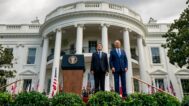
Regional Overview
January — April 2024The “Year of Elections,” Take Two!
The “Year of Elections” is upon us and, notwithstanding a ripple or two, there have been no upsets. In Taiwan, the ruling Democratic Progressive Party (DPP) candidate won with roughly 40% of the vote, given the divided opposition. Incoming President William Lai Ching-te is expected to extend olive branches Beijing’s way when inaugurated on May 20 but the odds of Beijing being receptive are depressingly low. In Pakistan, candidates associated with former Prime Minister Imran Khan won the most seats but not enough to form a new government (or get Khan out of jail). In Indonesia, defense minister and retired army Gen. Prabowo Subianto won as expected, the only (minor) surprise being his first-round majority, avoiding a June runoff (and giving him lots of time to prepare for his October inauguration). In Russia, to no one’s surprise, Vladimir Putin emerged victorious, having neutered (if not murdered) any credible opposition. In South Korea, President Yoon Suk Yeol’s People Power Party failed to unseat the opposition in National Assembly elections, causing many to refer to him as a lame duck, despite three years remaining in his term. Prime Minister Narendra Modi is also expected to emerge victorious with India’s elections still underway.
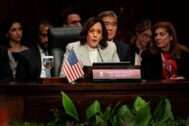
Regional Overview
September — December 2023The “Year of Elections” is Upon Us!
The major multilateral gatherings of the past year’s final trimester—the East Asia Summit (EAS) and associated ASEAN-arranged summitry in Indonesia in early September, the India-hosted G20 Summit a week later (Sept. 9-10 in Delhi), the ASEAN Defense Ministerial Meeting-Plus (ADMM-Plus) in Indonesia, and the concurrent Asia Pacific Economic Cooperation (APEC) Leaders Meeting in San Francisco on Nov. 16-17—were largely overshadowed by events (very) near and far away. The EAS and G20 Summits were most notable for who wasn’t there. Russian President Vladimir Putin skipped both meetings, sparing the hosts of the challenge (or embarrassment) of honoring (or ignoring) the international arrest warrant issued for him stemming from the Kremlin’s invasion and war against Ukraine. Those hoping for a fence-mending summit between Chinese President Xi Jinping and US President Joe Biden at the EAS or G20 were doubly disappointed; Xi skipped both meetings, while Biden only attended the G20, leaving the EAS to Vice President Kamala Harris.
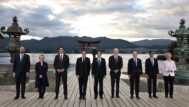
Regional Overview
May — August 2023Regional Overview: Building Partnerships Amidst Major Power Competition
Major power competition was the primary topic du jure at virtually all of this trimester’s major multilateral gatherings, with Russia’s invasion of Ukraine continuing to serve as a litmus test—a test many participants struggled to avoid taking. It was clear which side of the fence the G7 leaders stood on; Putin’s invasion was soundly condemned and Sino-centric warning bells were again gently sounded. At the BRICS Summit and Shanghai Cooperation Organization (sans the US), those alarms were clearly muted, as they were at the ASEAN Regional Forum, at which foreign ministers from all three were present. Headlines from the IISS Shangri-la Dialogue focused on the meeting that did not occur, as China’s defense minister pointedly refused to meet with his US counterpart. At the ASEAN-ISIS’ Asia-Pacific Roundtable, participants lamented the impact of major power tensions on ASEAN unity, even though ASEAN’s main challenges are internal ones that predate the downturn in China-US relations. Meanwhile, Beijing and Washington both expended considerable effort at these and other events throughout the reporting period fortifying and expanding their partnerships, even as many neighbors struggled not to choose sides or to keep a foot in both camps.

Regional Overview
January — April 2023“Like-Minded Minilateralism” Coming of Age
As broad-based multilateral organizations seem to be increasingly unable (or unwilling) to tackle the major security challenges of the day—Russia-Ukraine, China-Taiwan, North Korea, and Myanmar, to list but a few—more focused “minilateral” efforts involving “like-minded” allies and partners are coming to the fore. Foremost among the dysfunctional are the United Nations Security Council (UNSC) and broader UN mechanisms, thanks to Russian and Chinese intransigence. Sadly, ASEAN-led mechanisms like the East Asia Summit and ASEAN Regional Forum, not to mention ASEAN itself, also fall into this category, as does the G20, whose foreign ministers failed to reach any meaningful conclusions at their early March 2023 meeting, their first with India at the helm. Enter the Quadrilateral Security Dialogue (or “Quad,” involving Australia, India, Japan, and the United States), AUKUS (Australia-United Kingdom-US technical cooperation agreement), various minilateral cooperative efforts (including US-Japan-Philippines and US-Japan-Korea), and a resurgent like-minded G7, now that its (failed) experiment of drawing Russia and China into its process has come to an inglorious end. But not all new efforts are succeeding. President Biden hosted his second “Summit of Democracies” which drew little fanfare or attention.

Regional Overview
September — December 2022Indo-Pacific as the “Epicenter”
The Biden administration released its long-awaited National Security Strategy (NSS) this reporting period, along with unclassified versions of its National Defense Strategy and Missile Defense and Nuclear Posture Reviews. There were no big surprises. The NSS identified the Indo-Pacific as “the epicenter of 21st century geopolitics” and reaffirmed China as the “pacing challenge,” even while branding Russia as “an immediate threat to the free and open international system” as a result of its invasion of Ukraine. Underscoring the priority attached to the region, President Biden attended the East Asia Summit in Phnom Penh and the G20 Summit in Bali, with Vice President Kamala Harris representing the United States at the annual Asia Pacific Economic Cooperation (APEC) Leaders’ Meeting in Bangkok. Kim Jong Un was not invited to any of the Asia summits but found other ways to attract attention, including some 70 ballistic missile launches for the year while announcing plans to rapidly produce and potentially use tactical nuclear weapons. Chinese President Xi Jinping, when not busy defending Pyongyang’s bad behavior, was busy orchestrating the 20th National People’s Congress, where he was elected “president for life.”
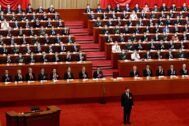
ROUNDTABLE
October 26, 2022China’s Foreign Relations After the Party Congress
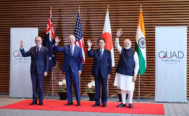
Regional Overview
May — August 2022Washington “Pivots” to Asia
The Biden administration has rediscovered Asia. And, for better or worse, so has the US Congress. While the administration’s national security documents (or at least their unclassified sneak previews) have identified the Indo-Pacific as a priority theater vital to US national security and China as “our most consequential strategic competitor and the pacing challenge,” Europe continues to steal headlines and the lion’s share of the administration’s (and international media’s) attention, thanks to Vladimir Putin and his unwarranted (and so far unsuccessful) invasion of Ukraine.
While many eyes remain on Putin’s war (and NATO’s US-led solid support for Kyiv), this reporting period saw President Biden finally make his first trip to Asia to visit longstanding US allies and attend the second in-person Quadrilateral Security Dialogue (“Quad”) Summit. Prior to his trip, Biden hosted his first US-ASEAN Summit in Washington. Meanwhile Secretary of Defense Lloyd Austin and Secretary of State Antony Blinken were both in Southeast Asia, respectively for the Shangri-La Dialogue and for various ASEAN-driven ministerials. These administration trips were largely overshadowed, however, by US Speaker of the House Nancy Pelosi’s controversial trip to Taiwan, the first by a House Speaker in 25 years, which was sure to—and clearly did—draw Beijing’s ire.
The US administration also (finally) put some meat on the bones of its Indo-Pacific Economic Framework, even though (like Obama’s earlier pivot) the trade and economic dimension of the administration’s Indo-Pacific Strategy remains the least developed. The military dimension of the strategy was much more in evidence, highlighted by the Rim of the Pacific (RIMPAC) exercise and a number of other multilateral training events throughout the region. Multilateralism will continue to capture the headlines as we move into the year’s third trimester with the ASEAN-driven East Asia Summit and Asia-Pacific Economic Cooperation (APEC) Leaders’ Meeting sharing pride of place with the Indonesia-hosted G20 Summit.
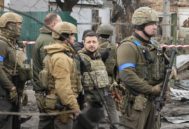
Regional Overview
January — April 2022Ukraine Seizes the Headlines Amid Mounting Concerns About China
International attention during the first trimester of 2022 quite naturally focused on the Russian invasion of Ukraine, amid heavy (and often breathless) speculation regarding its political, security, and economic implications for Asia in general and China-Taiwan in particular. Largely overlooked (except by us) has been the release of the Biden administration’s Indo-Pacific Strategy and the classified versions of the National Defense Strategy (NDS), Nuclear Posture Review (NPR), and Missile Defense Review (MDR). Still missing in the Indo-Pacific Strategy are specifics regarding the Indo-Pacific Economic Framework (IPEF), first unveiled (sans details) by President Biden at last October’s East Asia Summit, which supposedly encompasses the trade and economic dimension of the administration’s Asia policy. Also still missing is the all-encompassing National Security Strategy (NSS), which traditionally precedes these documents. It was reportedly sent back to the drawing board following the Russian attack.
Events in the opening trimester of the year also raised both hopes and concerns regarding the viability of the Quad, the increasingly more formal collaboration among Australia, India, Japan, and the United States. The Australia-UK-US (AUKUS) enhanced security partnership also made progress, to the delight of its members.
